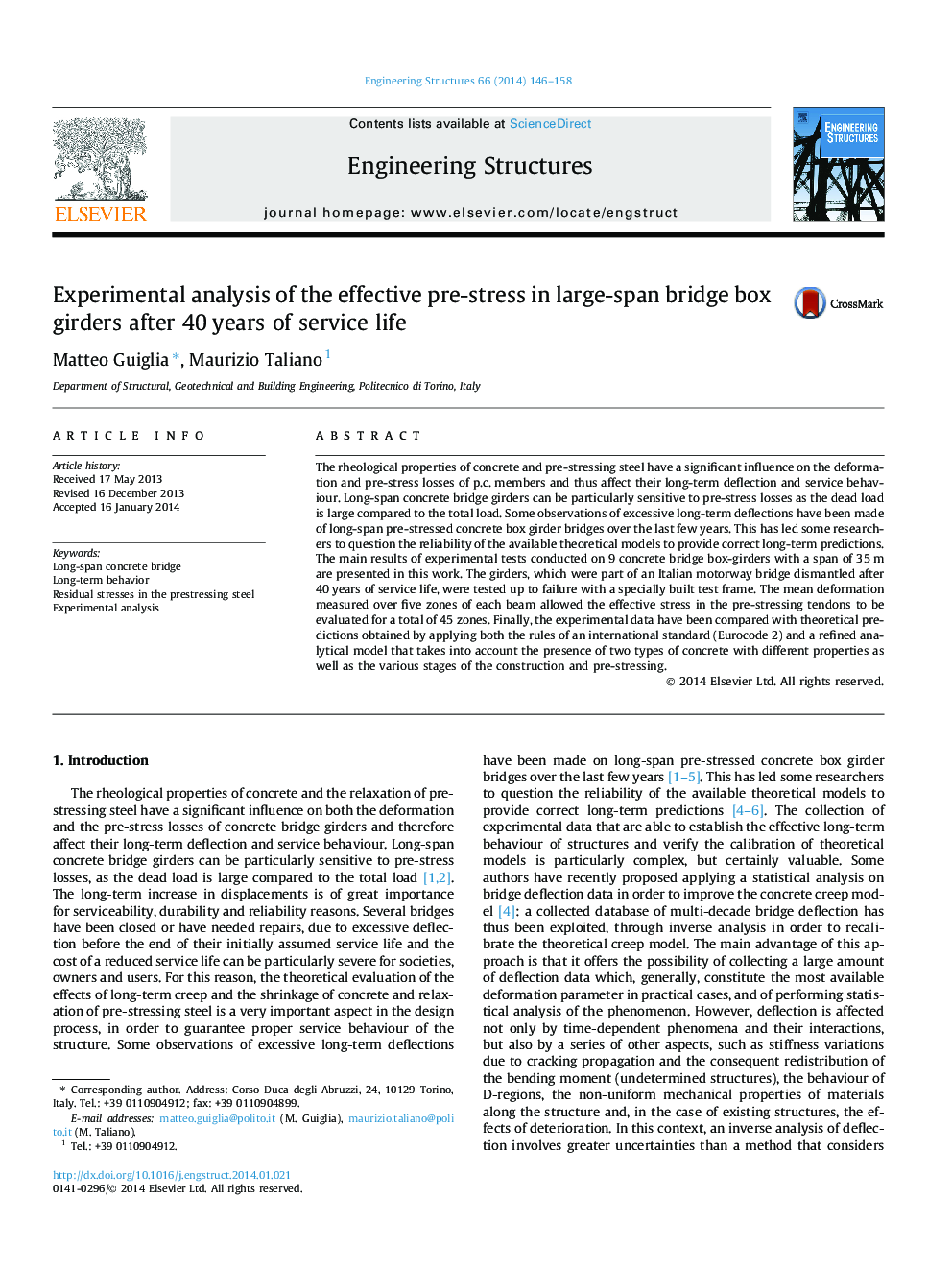| کد مقاله | کد نشریه | سال انتشار | مقاله انگلیسی | نسخه تمام متن |
|---|---|---|---|---|
| 266842 | 504381 | 2014 | 13 صفحه PDF | دانلود رایگان |

• Tests on 9 concrete bridge box-girders, span 35 m, after 40 years of service life.
• The beams were tested up to failure with a special purpose test frame.
• Effective stress in tendons evaluated through measured mean deformation (45 zones).
• The percentage loss range from 28% to 34% of the initial prestressing stress.
• Comparison experimental/theoretical analysis (EC2 model): scattering lower than 10%.
The rheological properties of concrete and pre-stressing steel have a significant influence on the deformation and pre-stress losses of p.c. members and thus affect their long-term deflection and service behaviour. Long-span concrete bridge girders can be particularly sensitive to pre-stress losses as the dead load is large compared to the total load. Some observations of excessive long-term deflections have been made of long-span pre-stressed concrete box girder bridges over the last few years. This has led some researchers to question the reliability of the available theoretical models to provide correct long-term predictions. The main results of experimental tests conducted on 9 concrete bridge box-girders with a span of 35 m are presented in this work. The girders, which were part of an Italian motorway bridge dismantled after 40 years of service life, were tested up to failure with a specially built test frame. The mean deformation measured over five zones of each beam allowed the effective stress in the pre-stressing tendons to be evaluated for a total of 45 zones. Finally, the experimental data have been compared with theoretical predictions obtained by applying both the rules of an international standard (Eurocode 2) and a refined analytical model that takes into account the presence of two types of concrete with different properties as well as the various stages of the construction and pre-stressing.
Journal: Engineering Structures - Volume 66, 1 May 2014, Pages 146–158